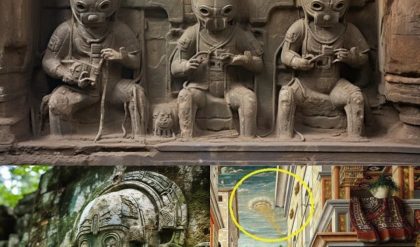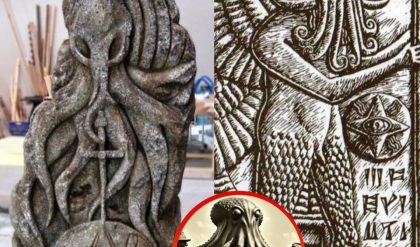In an extraordinary archaeological discovery, a rare copper alloy statue of Princess-Priestess Takushit from Egypt’s 25th Dynasty has been unearthed in Athens, Greece. This remarkable find sheds new light on the cultural and political exchanges between ancient Egypt and Greece, offering a deeper understanding of the influence of Egyptian civilization on the wider Mediterranean world.

The Discovery
Uncovering the Statue:
- The statue was discovered during an excavation in Athens, an unexpected location for such an artifact. Measuring approximately 35 centimeters in height, the statue is exquisitely detailed, featuring intricate engravings and hieroglyphs that identify the figure as Takushit, a princess-priestess who lived during the 25th Dynasty of Egypt, around 700 BC.
The 25th Dynasty Connection:
- The 25th Dynasty, also known as the Nubian or Kushite Dynasty, ruled Egypt from around 747 to 656 BC. Takushit was a prominent figure during this period, known for her role in religious and political life. The discovery of her statue in Athens raises intriguing questions about the connections between Egypt and Greece during this time.
Historical and Cultural Significance
Egyptian Influence in Greece:

- The presence of an Egyptian statue in Athens highlights the cultural exchanges between these two great civilizations. Egypt’s influence on Greek art, religion, and politics was profound, particularly during the Late Period of Egyptian history. This statue serves as a tangible link between the two cultures, illustrating the extent of their interactions.
The Role of Takushit:
- Princess-Priestess Takushit was not only a member of the royal family but also a significant religious figure. Her role in the temple rituals and her status as a princess would have made her a person of considerable influence. The statue likely served as a votive or commemorative object, possibly placed in a temple or a private collection by a Greek admirer or a wealthy patron.
Artistic and Technical Aspects
Craftsmanship and Materials:
- The statue is crafted from a copper alloy, a material commonly used in Egyptian art for its durability and ability to capture fine details. The intricate craftsmanship is evident in the detailed rendering of Takushit’s attire, jewelry, and facial features, which reflect the high level of skill possessed by Egyptian artisans.
Hieroglyphic Inscriptions:
- The statue bears hieroglyphic inscriptions that provide information about Takushit’s titles and lineage. These inscriptions are crucial for understanding the historical context of the statue and its significance. They also offer insights into the religious and ceremonial practices of the time.
Implications and Future Research
Understanding the Statue’s Journey:

- How the statue of Takushit ended up in Athens is a mystery that researchers are eager to solve. It could have been brought to Greece as part of a trade exchange, a diplomatic gift, or even as loot during a period of conflict. Future research will focus on tracing the statue’s journey from Egypt to Greece and understanding its role in Greek society.
Broader Impact on Historical Knowledge:
- This discovery has the potential to reshape our understanding of the connections between Egypt and Greece. It suggests that the influence of Egypt on Greek culture may have been more direct and widespread than previously thought. Further studies may reveal additional artifacts or texts that support this connection.
Conclusion: A Window into the Ancient World
The unearthing of the copper alloy statue of Princess-Priestess Takushit in Athens is a fascinating and significant find that opens a new chapter in the study of ancient Egypt and its interactions with the wider world. This statue not only represents the artistic and cultural achievements of the 25th Dynasty but also serves as a reminder of the complex and interconnected nature of ancient civilizations. As researchers continue to explore this discovery, it promises to deepen our understanding of the ancient world’s rich tapestry.





